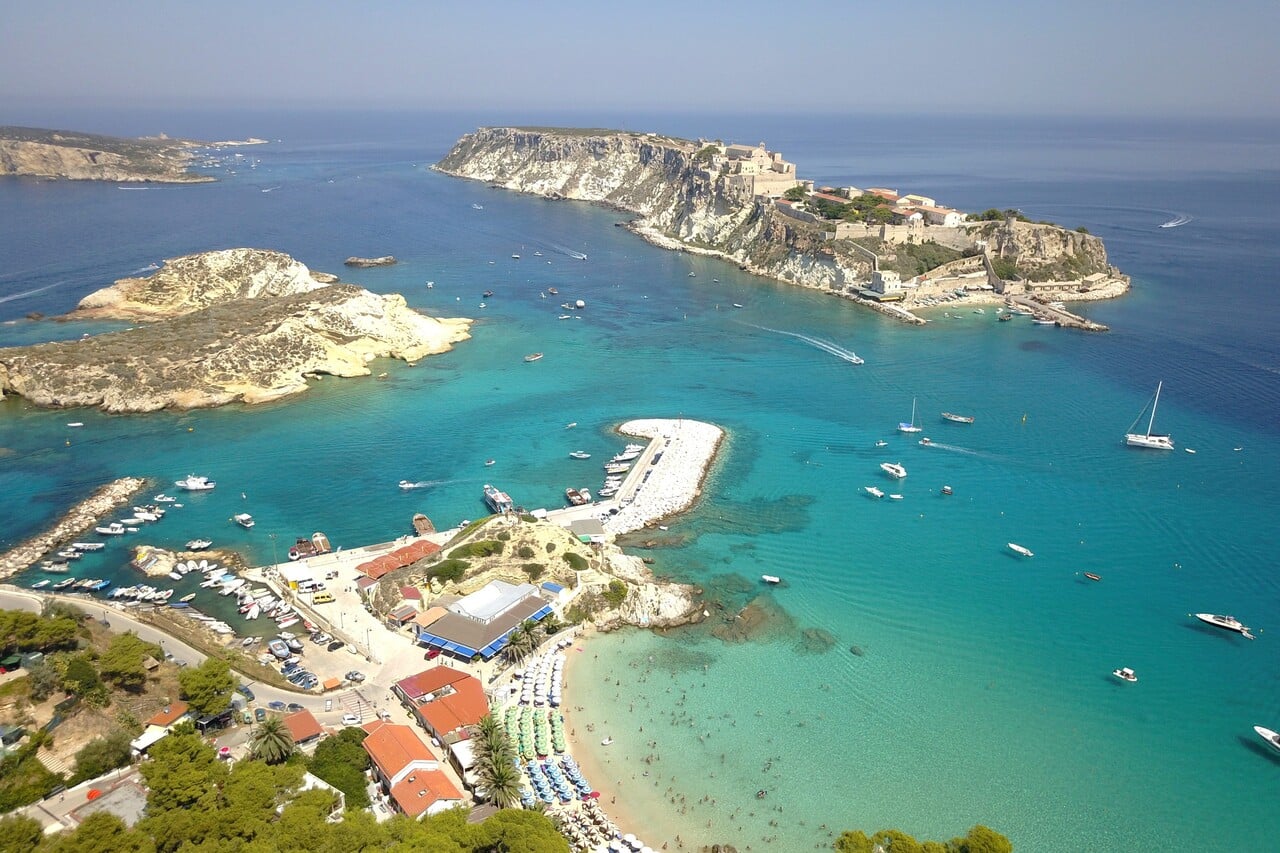They are the last border of the Adriatic Sea. Five little heavenly areas that were already known in the Roman time with the name of Diomede, the Greek Hero who, according to the legend, shaped the Gargano and the Sub-Appenine from the lava stones taken from the Pergamo’s rock then he created the islands with the remaining stones, he threw them into the deep blue sea and the five islands arose little by little. It’s an archipelago full of little inlets overlooking a breathless sea and it’s heaven for divers. The Tremiti islands are divided into the main San Domino and San Nicola, the two main islands that are both inhabited and the three smaller ones, Capraia, Pianosa and Cretaccio that are all uninhabited. The Archipelago was already inhabited in the ancient times and it is a popular tourist destination nowadays especially for the ones who seek the great exhibition of the sea and a tourism that is far from the big tourist waves. It’s heaven 22 kilometres form the Gargano’s coastline in the amazing Puglia.

Ph. BBP76000/shutterstock
The art by the Adriatic Sea
The island of San Nicola is the historical, administrative and cultural core of the archipelago and it’s the most important one. It’s overlooked by the fortified abbey of Santa Maria a Mare that features three naves and a beautiful mosaic floor, a peculiar Byzantine shaped wooden cross with a statue of Madonna and child; it was once called “the Montecassino in the middle of the sea” and it was built by the Benedictine monks in 1045. This island represents a rich cultural heritage surrounded by an amazing landscape. Besides the Abbey there are other important architectural emergencies like Torre dei Cavalieri del Crocifisso (tower of the knights of the Crucifix), Torre del Pennello (the tower of the brush), once a watching tower over the bay, the Angioina Tower also called Torre del Ponte (tower of the bridge) which is located where the draw-bridge wanted and built by Charles II of Anjou was once set and the Torrione dei Cavalieri of San Nicolò (tower of the San Nicolo’s Knights). San Nicola also means nature to be enjoyed on board of a sailboat or a raft to circumnavigate the island and discover the inlets and the caves among which the Ferraio and the Madonna ones.

Ph. Barelli Paolo/shutterstock
Inlets and Aleppo trees
The island of San Domina is covered in a forest of Aleppo pine trees that reaches the rocks overlooking the sea, it’s the biggest island of the Archipelago and the most varied too. Its tourist offer is varied as well and it’s the widest in the Tremiti islands since there are several resorts and hotels. Circumnavigating it is an incredible experience especially if you follow the shape of the island clockwise, you can leave from the harbour of San Domino and reach the only sandy beach of the Archipealgo, Cala delle Arene then you can reach wonderful spots like the most Eastern edge of the island, Punta dello Spido, Cala Matana to which Lucio Dalla dedicated his long-playing “Luna Matana”. Then there is also Punta dal Pigno, Cala dell’Elefante that reminds the shape of an elephant, Grotta del Sale (cave of salt), Grotta delle Viole (Cave of Violets), Cala dei Benedettini (the Benedictines inlet), Punta del Vuccolo, the most Western area of the island, Punta del Diamante (the diamond edge) and the Pagliai, four big rocks. The sea, the inlets, the caves, the rocks as well as a lush vegetation together with the Aleppo pine trees forest are matched with the typical Mediterranean vegetation featured by the myrtle, the rosemary, the juniper and the lentisk.

Cala del Pigno, Isola di San Domino – Ph. Simone Angelo Ferri/shutterstock
High-sea rocks
The three smaller islands are little uninhabited heavens. They are as big as a rock, the Cretaccio takes its name from the yellow clay it is made of that is constantly eroded by the sea water. Capperaia is the other name of the island of Capraia since it is covered in wide areas full of capers; you can’t land on the island, but backpackers generally approach the shore near an underwater statue of Padre Pio.

Cretaccio – Ph. vaklav/shutterstock
Pianosa is around twenty kilometres far from the core of the Archipelago while Pianosa is a rocky 15 metres high stretch of land that is usually totally covered when sea storms occur. It is part of the Protected Marine Reserve; it features an amazing seabed full of plants and fish. It’s a wonder of the Adriatic deep blue sea that can be explored only by the skilled divers and expert authorized guides.

Isola di Capraia – Ph. Barelli Paolo/shutterstock
Enchanted sea-beds
Grey mullets, sea breams, lobsters, octopus, groupers and squids. This is just a part of the species that inhabit the Marine Reserve of the Tremiti Archipelago that was born on the 14th July 1989. This reserve is one of the most beautiful natural habitats of the Mediterranean Sea and it includes the coastlines of the islands rich of algae like the Mediterranean Acetabularia and the Mediterranean Corallina. The wide variety of fish as well as the lush vegetation and the particular type of seabed make the underwater view an unmissable wonder of the Adriatic Sea and the ideal area for divers. The great shearwater that reaches the Archipelago’s cliffs to nest in Spring and the royal seagull are the main sea birds of this area as well as the reptiles like the country lizard, the snake, the gecko while among the mammals there are the little mice and the rat.

Ph. Barelli Paolo/shutterstock


0 Comment